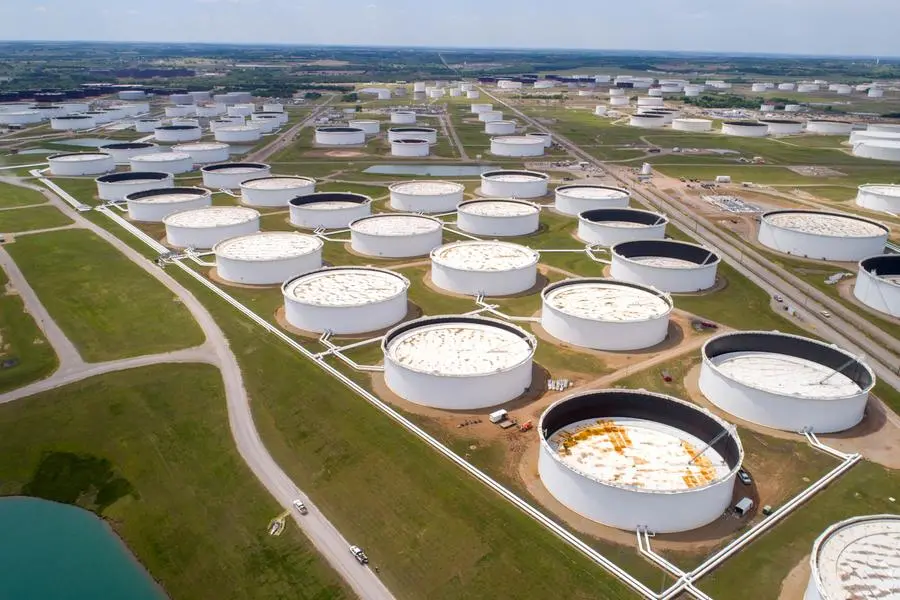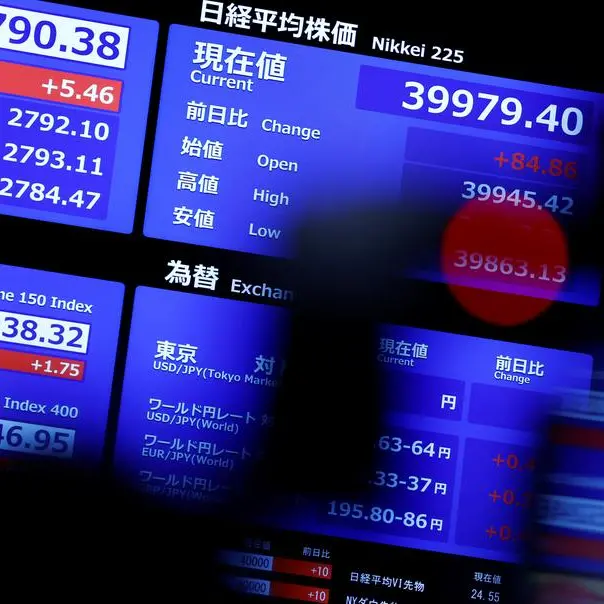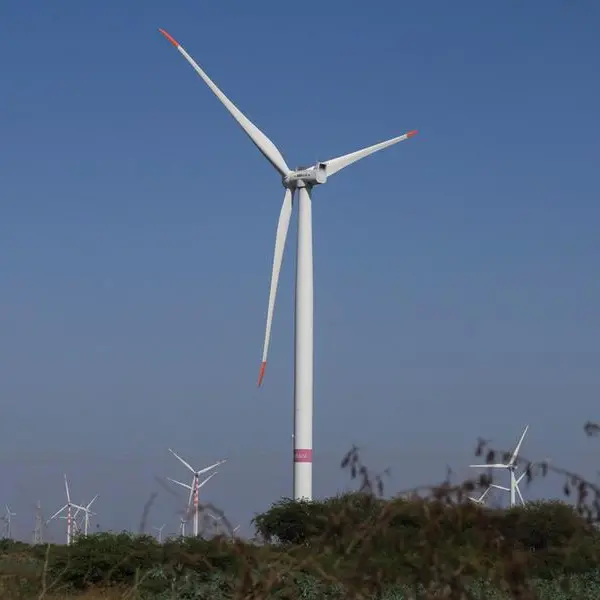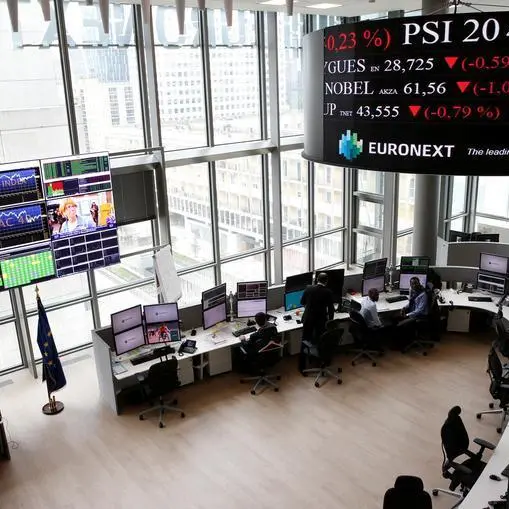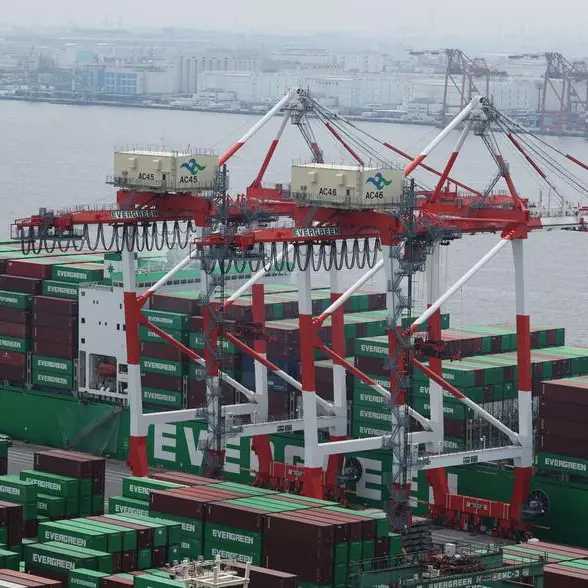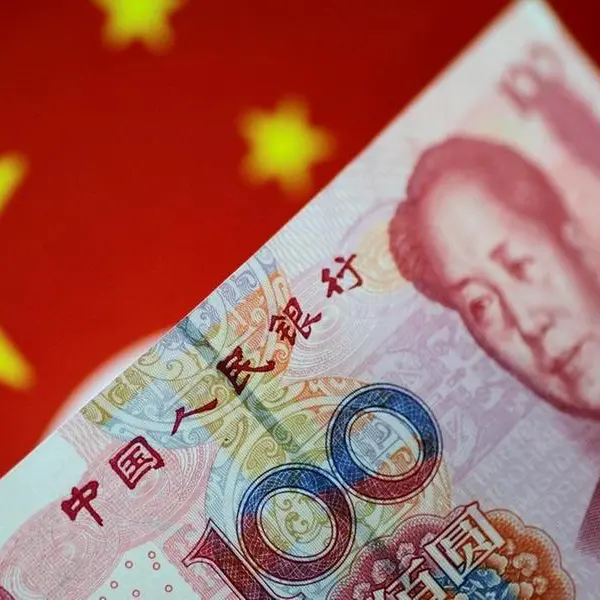PHOTO
FILE PHOTO: Crude oil storage tanks are seen in an aerial photograph at the Cushing oil hub in Cushing, Oklahoma, U.S., April 21, 2020. REUTERS/Drone Base/File Photo
(The opinions expressed here are those of the author, a columnist for Reuters.)
LAUNCESTON, Australia - China boosted crude oil inventories in August by the biggest amount in 14 months, confirming that the rebound in imports was driven by stockpiling and not by any recovery in fuel consumption.
A total of 1.85 million barrels per day (bpd) were added to either commercial or strategic storages, according to calculations based on official data.
This was the biggest flow to inventories since June 2023, when 2.1 million bpd were added to stockpiles, and was also a sharp increase from the 280,000 bpd added in July.
China doesn't disclose the volumes of crude flowing into or out of strategic and commercial stockpiles, but an estimate can be made by deducting the amount of crude processed from the total of crude available from imports and domestic output.
China's refineries processed 59.07 million metric tons of crude in July, equivalent to about 13.91 million bpd, according to data released on Sept. 14 by the National Bureau of Statistics.
This was up a tiny amount from July's 13.908 million bpd, which was the weakest month for refinery throughput since October 2022. August's processing was also down from the 15.23 million bpd for the same month last year.
The world's biggest crude importer saw arrivals of 11.56 million bpd in August, while domestic output was 4.20 million bpd, given a total of 15.76 million bpd available to refineries.
Subtracting the volume processed of 13.91 million bpd leaves a surplus of 1.85 million bpd.
For the first eight months of the year, China added 1.11 million bpd to inventories, about 300,000 bpd more that for the same period last year and an acceleration from the 800,000 bpd stored for the first seven months of the year.
With refinery processing remaining soft, the question is why did China's refiners buy excess volumes of crude oil for August delivery?
The answer is most likely the declining price trend that prevailed when August-arriving cargoes were arranged.
PRICE IMPACT
Cargoes that arrived in August were most likely arranged in May and June, a time when global crude prices were trending lower.
Global benchmark Brent futures reached their highest level so far this year of $92.18 a barrel on April 12, before starting a downtrend to a low of $75.05 on Aug. 5.
This means that China's refiners would likely have been encouraged to buy more crude during this window, meaning August and September imports may be fairly strong relatively to the earlier months this year.
However, Brent crude staged a small rally after the Aug. 5 low, reaching a high of $82.40 a barrel on Aug. 12, and then staying in a fairly narrow range either side of $80 until the end of the month.
Since then, global demand concerns, especially in China, have seen Brent fall sharply, hitting a 32-month low of $68.68 a barrel during trade on Sept. 10.
The contract has since recovered slightly to end at $71.61 a barrel on Sept. 13.
The past buying pattern of China's refiners suggest that they have become price-sensitive in recent years, buying excess crude when they deem oil to be cheap, but turning to inventories when they believe prices have risen too high, or too quickly.
In some ways this has the effect of stabilising the market, as weak prices draw more cargoes to China, while any strong rally results in lower volumes, which tends to cap price gains.
If China is acting as some sort of market smoother, it's likely mixed news for exporter groups such as OPEC+.
It means that when prices decline, China will buy more, but conversely it becomes harder to get a sustained rally, even when demand is driving the price higher.
China has shown it's capable of swinging its imports by around 2 million bpd, depending on circumstances.
While some 2% of the global crude market doesn't sound massive, it's about 5% of the total seaborne volumes and therefore likely enough to exert influence of the direction of prices.
The opinions expressed here are those of the author, a columnist for Reuters.
(Editing by Michael Perry)
